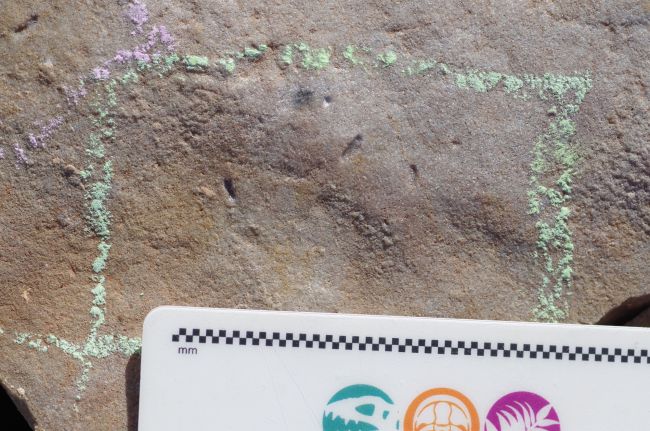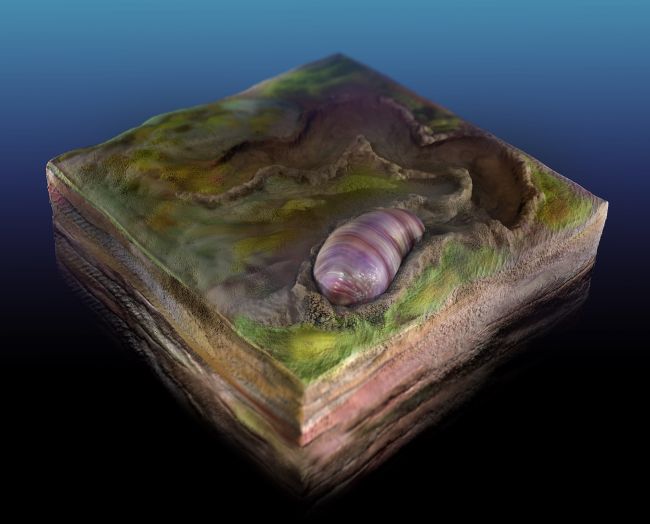Where do we come from?
It's a big question. And who isn't at least a little curious about where humanity got its start?
Well, like a lot of big questions, the answer is complex ... and not necessarily what you would expect. And it gets weirder the further back you go. Why just last week, we ran into this 380-million-year-old fellow, Elpistostege watsoni, the fish that was likely the forebearer of all fingers. Bet you didn't see that one coming on the old family tree!
Well, if you thought old fish fingers was odd, you're going to love Ikaria wariootia. Meet the rice-sized worm that we can all call ultra-super-alpha-granddad.
The oldest shared ancestor of all animals.
Bilateral and beautiful
We take animal symmetry for granted as natural. But it wasn't always this way. (Droser Lab/UCR)
Yep, that's right. All animals. And when you put it that way, the simplicity of this 555-million-year-old worm makes some sense. Let us explain.
Today, the animal kingdom is so varied that it boggles the imagination. But strip away all that variety, and you'll find the characteristics that we all share come down to four basic traits:
- An opening for eating food (mouth)
- A passage through our bodies where that food is digested (gut/stomach/intestines)
- An opening for food waste to exit (bum)
- Bodies that are bilateral (the same on both sides)
(If that last point tripped you up a bit, think about it. All animals — from fish to insects to reptiles to birds — have bodies whose left and right sides are mirror images of the other. Even us!)
Anyway, the fossil of I. wariootia is the earliest evidence that scientists have of these traits appearing in a living thing. What's more, these four traits describe pretty much everything about this animal's body. Like we said, simplicity!
Basic beginnings

This rock is dotted with the fossil impressions of the I. wariootia. (Droser Lab/UCR)
So what exactly was life like for this simple start for animal kind?
These wriggling critters burrowed into the ground, searching for food. Much like modern earthworms, this food was likely found by eating their way through the earth and taking what they could find. Uh, yum?
Seafloor squirmers
But hey, we all have to start somewhere! And that somewhere was on the bottom of the sea. The fossils of I. wariootia were found in a chunk of rock in Australia, one that was once on the ancient sea floor. 3D scans of the rock discovered both the impressions of the creatures and the burrows they left behind.
And if the exploits of this prehistoric ancestor don't sound that impressive, please keep in mind that at the time, the rest of life amounted to a bunch of formless blobs just floating around in water. Suddenly this bilateral mini-muncher doesn't look so bad!
Thanks for everything, I. warioota!
 When it comes to animal life, this 555-million-year-old worm thing probably got the ball rolling. (© Sohail Wasif/UCR)
When it comes to animal life, this 555-million-year-old worm thing probably got the ball rolling. (© Sohail Wasif/UCR)










But wouldn’t the fingered fish have come first?
😀 very intresting